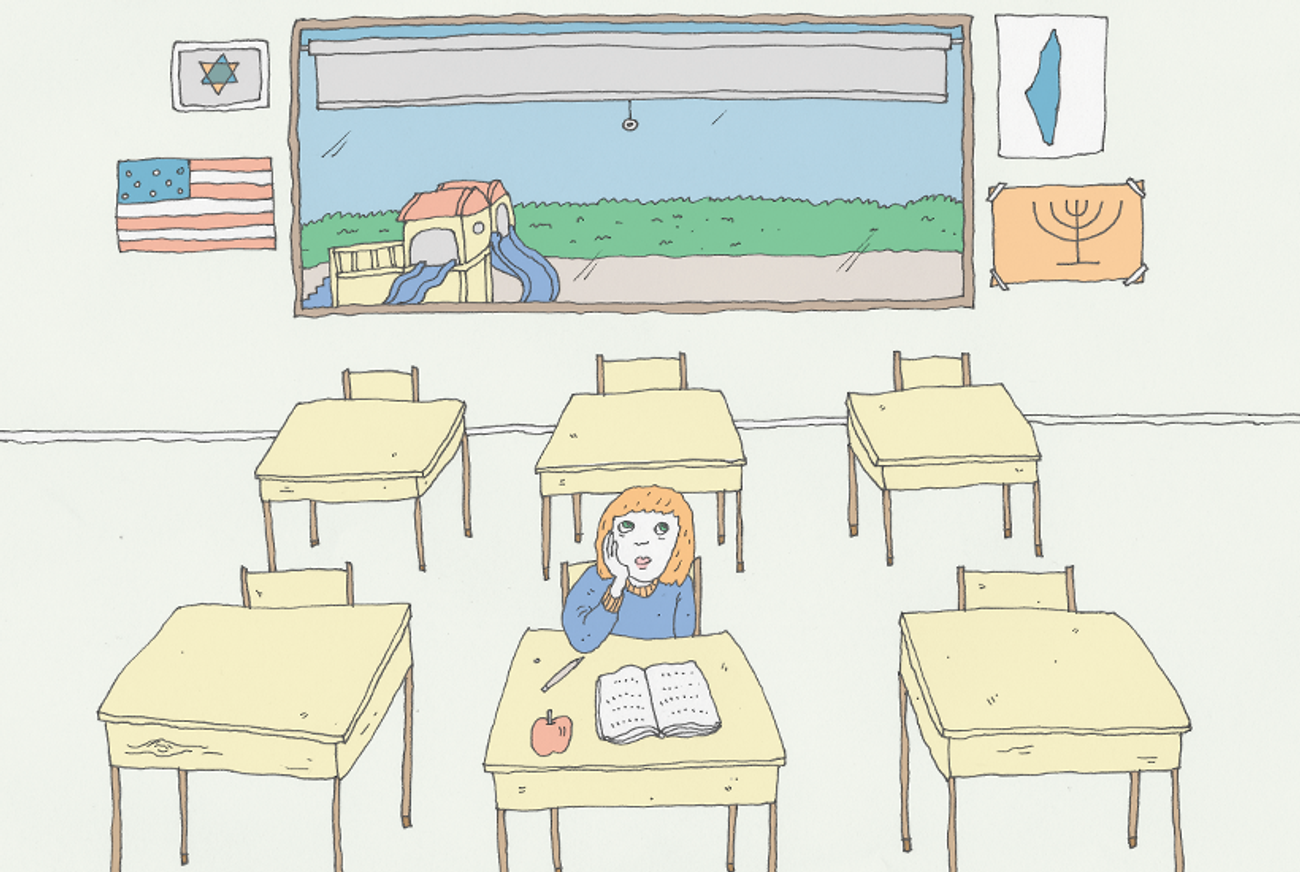Stop Whining and Pay for Day School
There’s an easy answer for Jewish communal leaders who fear for the future of liberal Judaism




My wife and I send our daughter to a non-Orthodox Jewish day school. It is costly but excellent, giving us a community we cherish and our child an education we believe will help her grow intellectually, emotionally, and spiritually.
To hear the pundits tell it, we’re in the minority: While Orthodox day-school attendance is ever on the rise, the rest of us Jews—lox-gobbling, Roth-reading, shul-shunning schlubs—now make up only about 13 percent of the total day-school population. And, at least according to one usually astute observer of Jewish life, it’s not only a passing trend; it’s evidence of the demise of all of liberal Jewry. In other words, it’s very a sad story.
Or it would be, if it were true.
Let’s have some fun with facts. For starters, before we declare the problem here to be the death of a broad, century-old political and cultural movement, we might first do some simple math. Could it be that there are more ultra-Orthodox students not because of some vast tectonic shift in American Jewish identity but rather because ultra-Orthodox schools cost about a third as much as non-Orthodox ones do—and members of Orthodox communities who can’t even afford this much get subsidized so that they can?
Moreover, while it is absolutely correct to point to a precipitous decline in non-Orthodox day-school attendance, it’s also vital to note that this decline is due mostly—perhaps almost entirely—to the collapse of the Solomon Schechter school system, which has gone from 63 schools and 17,563 students in 1998 to 39 schools and 9,718 students in 2013. That’s a lot of students to lose, but the loss has more to do with the institutional decay of the Conservative movement, a troubling trend but not, in and of itself, a sufficient explanation for the mystery of the disappearing non-Orthodox Jewish day-school attendees.
Where, then, have all the non-Orthodox Jewish kids gone? Many of them went to non-affiliated community schools, like the one to which we happily send our daughter. Over the last two decades, the number of children enrolled in such schools jumped from 15,000 to 20,000, a 33 percent increase. That’s not a minor surge, especially considering that many of these schools charge upwards of $30,000 a year in tuition. Other Jewish children go to Chabad: At least half of the 13,000 children who attend the movement’s 80 schools aren’t Hasidic, but ordinary folks who are attracted by the promise of a Jewish education at an affordable cost. Add it all up, and you see that it’s quite possible that the number of non-Orthodox Jewish kids attending day schools may in fact be growing.
None of which is really cause for celebration. Numbers aside, the story of Jewish education in America is still very much a story of failure: failure of resource allocation, failure of communal engagement, and failure of the imagination. With traditional Jewish communal structures crumbling, and with Jewish philanthropies investing very little in education, the only way to provide a serious Jewish education in the post-denominational world was to build a new school, which is a costly proposition that makes said school affordable to about 5 percent of the community.
This is a terrible shame, because numbers suggest that, given the choice, many more American Jews would opt for a community day-school education if they could even remotely afford it. That is why the number of people registering for such schools is increasing even as the percentage of non-Orthodox Jews in America is shrinking.
It’s time, then, that we stopped lamenting the condition of non-Orthodox Jewish education as some inevitable tragedy. It’s not. We can fix it, but only if we get serious about our commitments.
Let’s begin with the lowest hanging fruit, Jewish foundations and philanthropists who, while talking so brave and so sweet about Jewish continuity and other buzzwords, failed to provide the basic infrastructure for Jewish education to thrive. Sheldon Adelson, to name just one obvious example, has given $100 million of his fortune to support the Birthright program and send young Jews on a 10-day trip to Israel; had he invested this money in Jewish education instead, and assuming a year of education at a great day school costs around $28,000, he would have bought nearly 6,500 children an entire year’s worth of tuition at any excellent non-denominational school.
Adelson is free to spend his money as he pleases. More upsetting is the fact that that not a single Jewish federation—organizations whose only raison d’etre should be answering challenges like this one—has made education a serious priority.
The fault is also, finally, ours. Many of us non-Orthodox Jews can’t afford the exorbitant cost of Jewish education. Many more prefer more cosmopolitan, multifaceted educational environments. That’s perfectly understandable. Others, however, are in a position to pledge their resources and make Jewish education a priority and yet choose to limit their engagement with Jewish life to vague laments about the disappearance of liberal Judaism and mild nostalgia for its glory days.
That’s a shame. If we realign our commitments and our budgets, we can change the numbers on Jewish education and, with it, just about every other statistic we deem vital to the preservation and prosperity of a robust and diverse Jewish community.
***
Like this article? Sign up for our Daily Digest to get Tablet Magazine’s new content in your inbox each morning.
Liel Leibovitz is a senior writer for Tablet Magazine and a host of the Unorthodox podcast.
Liel Leibovitz is editor-at-large for Tablet Magazine and a host of its weekly culture podcast Unorthodox and daily Talmud podcast Take One. He is the editor of Zionism: The Tablet Guide.